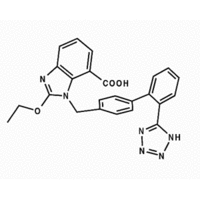Purpose: Atrial natriuretic peptide (ANP) is elevated in CHF in response to chronic cardiac overload. Candesartan is a long acting angiotensin II (AII) receptor blocker that is an ideal medication for hypertensive diabetic patients. STRETCH study proved that candesartan is beneficial for CHF, but there is no study on the efficacy of candesartan on diabetic patients with CHF. Therefore, we studied the effects of C on ejection traction, ANP and AII levels in diabetics with CHF.
Methods: Sixteen diabetic patients with CHF (9 men, 7 women, aged 62-78y) were treated with candesartan 8-16 mg/d, and their DM were managed with glyburide (hgb Alc 7.2 [+ or -] 1.9%). ANP and AII levels were measured by RIA monthly. Echocar-diogram were done every 3 months.
Results: Basal ANP levels were above normal. ANP normalized for 2 months, then maintained a plateau at the upper limits of normal. Ali peaked for 2 months, and stayed above normal EF improved significantly after 6 months.
Conclusion: Candesartan lowers ANP and improves CHF in diabetic patients.
Clinical Implications: Candesartan is an effective treatment for CHF in DM.
Stanley A Tan, MD, PhD(*); L G Tan, MD; S T Lukman, RN and L S Berk, DrPH. Loma Linda University, Loma Lind& CA and Oakcrest Health Research Institute, Yucaipa, CA.
COPYRIGHT 1999 American College of Chest Physicians
COPYRIGHT 2000 Gale Group



